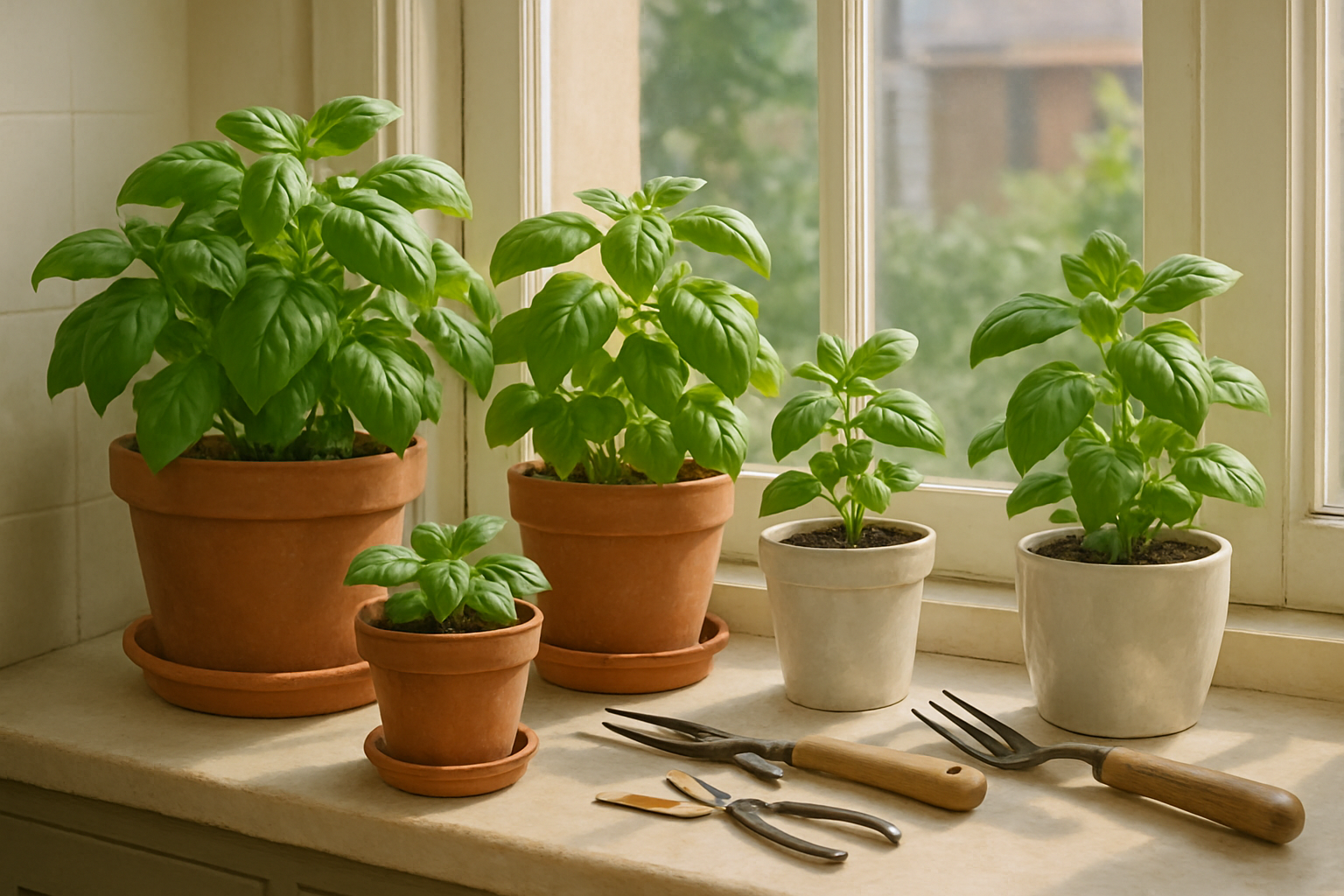Introduction
Growing basil in pots is a smart way to keep this aromatic herb close at hand, whether you have a sprawling backyard or just a sunny windowsill. Basil thrives in containers, making it perfect for gardeners with limited space or anyone who wants fresh herbs within easy reach.
The beauty of basil isn’t just in its vibrant leaves—it’s an ingredient that elevates everything from homemade pesto to simple salads. Having fresh basil on demand means brighter flavors and fewer trips to the store. Plus, container-grown basil is less prone to pests and diseases than garden-planted varieties.
In this guide, we’ll walk you through all the essentials for growing healthy, lush basil in pots—from choosing the right container and soil to watering tricks and harvesting tips. Whether you’re brand new to container gardening or an herb enthusiast, you’ll find practical advice to help your basil flourish indoors or out.
Choosing the Right Basil Variety and Pot
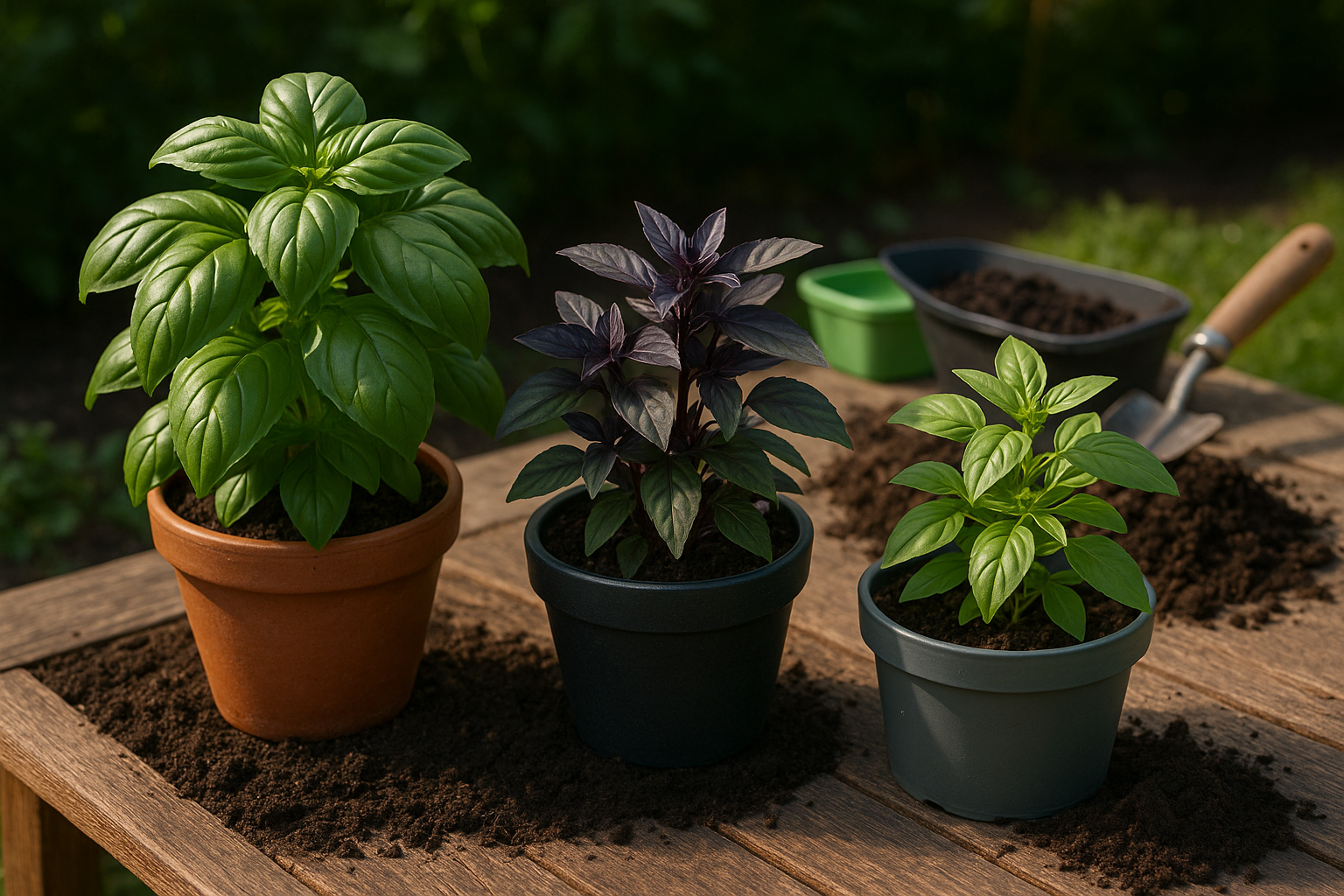
When starting your own basil garden in containers, choosing the right variety is key to successful growth and tasty harvests. Genovese basil is the classic choice for Italian dishes and pesto, with large, sweet leaves that thrive in pots.
Thai basil is another favorite, adding a spicy, anise-like flavor to stir-fries and Southeast Asian recipes; its compact growth makes it especially suited for small spaces. For a zesty twist, try Lemon basil—its citrusy aroma complements fish, salads, and desserts, and it’s well-behaved in containers.
Whichever variety you pick, matching it to the right pot is just as important. Go for a container at least 8–12 inches wide and deep to let the roots spread; this helps prevent wilting and stunted growth. Make sure the pot has drainage holes to avoid soggy soil, which can quickly cause root rot—a common issue with basil.
The material of your pot also matters: lightweight plastic is convenient for moving pots around, but clay or ceramic keeps roots cooler in hot weather. Once you’ve got your pot, fill it with a high-quality, well-draining potting mix—avoid using regular garden soil, which can compact and suffocate roots in containers.
A mix with added compost or organic matter helps retain moisture while also providing key nutrients for lush, healthy basil leaves. You can even mix in a handful of perlite or vermiculite to boost drainage.
Starting with the right variety, the perfect pot, and nutrient-rich soil sets your basil up for prolific growth, whether you’re snipping fresh leaves for caprese salad, spicy noodles, or homemade lemonade all summer long.
Starting Basil
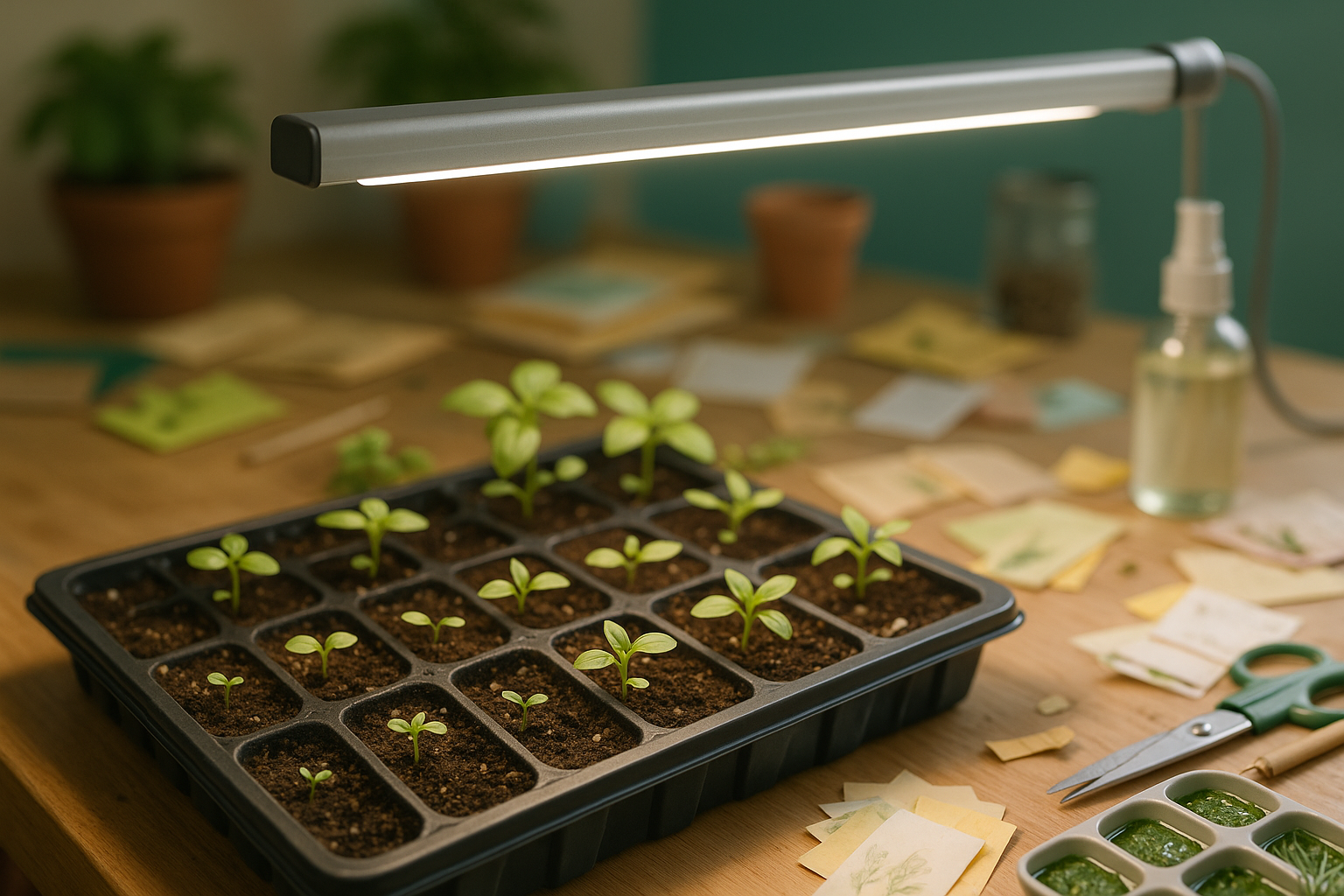
If you’re dreaming of fresh basil all summer, you’ll need to decide whether to start from seeds or buy nursery transplants. Growing basil from seed is rewarding and economical: a $2 packet can yield dozens of plants, letting you try different varieties like Genovese, Thai, or Lemon basil.
Seeds can be sown indoors about 6-8 weeks before your last frost. Use fresh seed-starting mix, sow seeds ¼ inch deep, and keep the trays warm—basil loves heat. If you don’t have space or patience, nursery transplants offer a head start. These plants often save 4-6 weeks compared to seeds, allowing you to harvest leaves sooner, but you might pay $3-$5 per plant and have fewer variety options.
For those with limited growing time or who want an instant herb garden, transplants are hassle-free, though they can be stressed by temperature changes or crowded roots. If you’re direct sowing basil in outdoor containers, wait until night temperatures stay above 55°F and the soil feels tepid to the touch. Water the soil first, sprinkle seeds thinly, and cover lightly—basil doesn’t like deep burial.
For indoor seedlings, hardening off is crucial: before planting outside, gradually expose young plants to outdoor sun and breezes over 5-7 days, starting with just an hour a day and increasing time outdoors. When your seedlings have at least two sets of true leaves, move them to larger pots or the garden, spacing about 8-10 inches apart.
Always transplant on cool, cloudy days or in the evening to reduce shock, and water well at planting time. Whether you start from seeds or transplants, monitoring moisture and providing plenty of warmth are the real secrets to lush, fragrant basil harvests all season.
Optimal Light, Temperature, and Location
Basil thrives best with plenty of sunlight—ideally six to eight hours of direct sun each day. Outdoors, choose a spot with unobstructed sunlight, such as a south-facing garden bed or patio where buildings and trees don’t cast much shade. Indoors, a sunny windowsill facing south is perfect. If sunlight is limited, consider using a grow light to supplement natural light and keep basil lush.
Temperature is equally important; basil loves warmth and really flourishes in temperatures between 70°F and 85°F (21°C to 29°C). If nighttime temperatures dip below 50°F (10°C), basil can suffer, so it’s wise to wait until all danger of frost has passed before planting outside in spring. In cooler climates, grow basil in containers so you can move them indoors when it’s chilly or even overnight if frost threatens.
When growing inside, avoid placing basil in drafty spots or directly beside cold windows. For extra warmth, set containers on top of the refrigerator or near a gentle heat source—but not too close, to avoid drying out. Rotating containers every few days ensures all sides of the plant get even exposure to light, helping prevent legginess.
During sudden weather changes, be prepared to shift pots to protected patios, porches, or sunny indoor corners. For gardeners on the go, lightweight containers with handles make moving your basil a breeze and allow you to chase the sun—and warmth—through the seasons.
Caring for Potted Basil
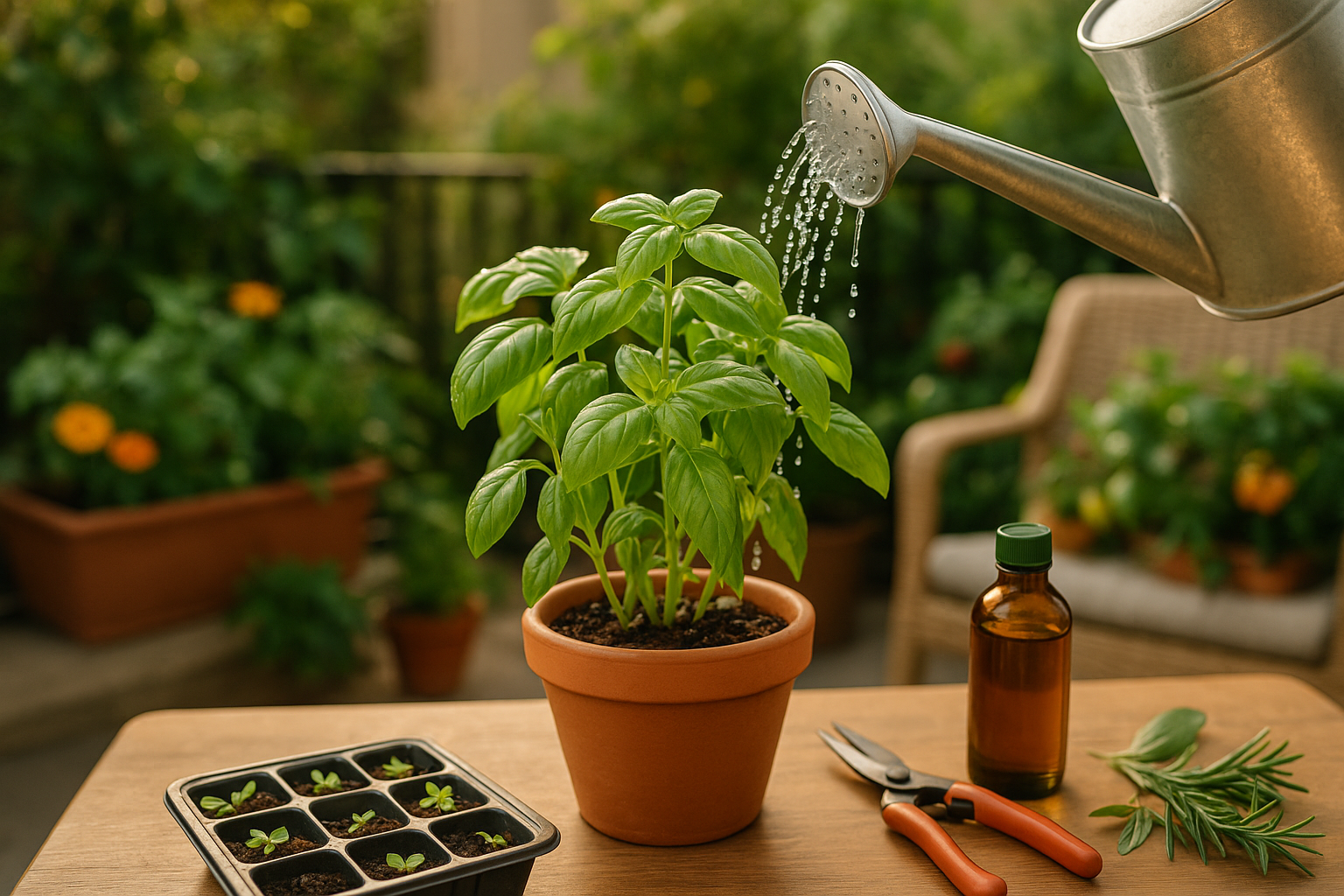
Caring for potted basil is simple, but a few key habits make all the difference in keeping your plant vibrant and productive. Water your basil when the top inch of soil feels dry—this usually means giving the plant a thorough soak about two to three times a week in warm weather, or less often in cooler, humid conditions.
Avoid the common mistake of letting the pot sit in excess water, as basil’s roots are prone to rot. Yellowing leaves and a wilting, droopy stem can be signs of overwatering, while leaves that are dull, limp, or curled inward may signal drought stress.
Feeding Your Basil
Feeding your basil is equally important for healthy growth. Use a balanced, water-soluble fertilizer diluted to half-strength every 3-4 weeks, or opt for slow-release granules mixed into the top layer of soil at the start of the growing season. If you prefer organic options, liquid seaweed or fish emulsion work well—just follow the label for application rates.
Pruning and Harvesting
Regular pruning is the secret to a full, bushy basil plant rather than a tall, leggy one. About once a week, pinch back the main stems just above a pair of leaves as soon as the plant has at least six sets of true leaves. This encourages your basil to branch out and produce fresh shoots.
Be sure to remove any flower buds as soon as you spot them, since flowering can slow foliage growth and reduce flavor. Harvest often—snipping leaves regularly not only keeps your plant neat but also stimulates new growth, so you’ll enjoy a steady supply of aromatic, healthy basil all season long.
With these habits, your potted basil can thrive on a windowsill, balcony, or patio.
Harvesting Basil and Ongoing Tips
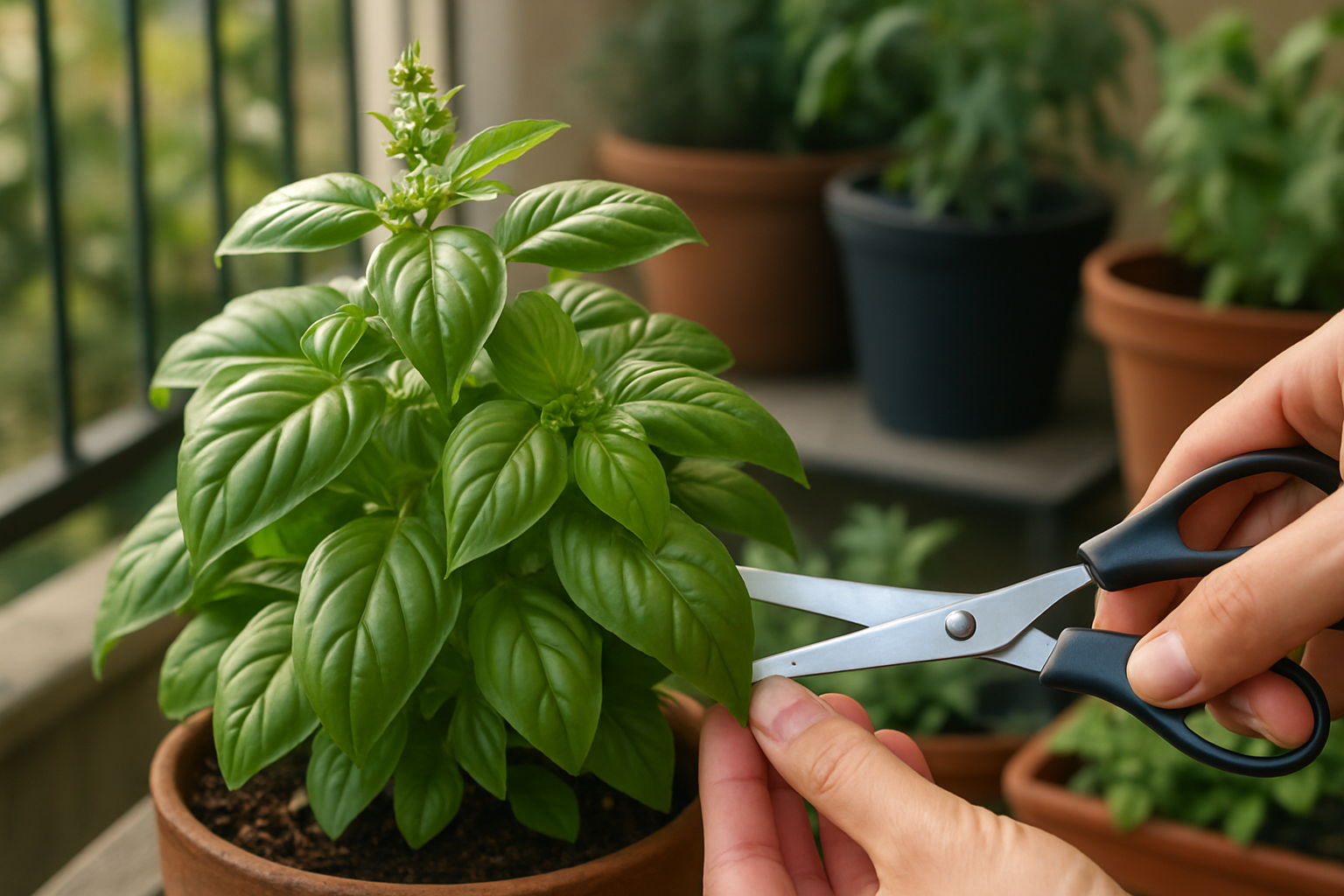
To get the best flavor from your basil, harvest the leaves in the morning after the dew dries but before the sun gets too hot—this is when essential oils are most concentrated, giving the leaves their signature fragrant punch. For a healthy plant, snip stems just above a pair of leaves using sharp scissors or your fingers, always taking from the top rather than the base. Aim to leave at least one-third of the plant intact so it keeps growing robustly.
To prolong your harvest, pinch off any flower buds as soon as they appear; flowering signals the plant to focus on seed production and can make the leaves taste bitter. Regular trimming, about once a week, not only delays flowering but also encourages bushier growth—resulting in more basil over time.
Keep your basil thriving by providing well-drained soil, watering at the base to avoid wetting leaves, and spacing plants for air circulation. If you notice yellowing leaves, it can be a sign of overwatering, poor drainage, or nutrient deficiency; adjust watering or feed with a balanced fertilizer as needed.
Watch for pests like aphids or Japanese beetles; gently spray leaves with water to dislodge them, or use an organic neem oil spray if infestations persist.
By harvesting basil correctly and practicing regular maintenance, you’ll enjoy a flavorful yield all season long, whether you’re using it fresh in salads or preserving it for later in pesto and sauces.
Conclusion
Growing thriving basil in containers is simple if you follow a few key steps: choose a roomy pot with good drainage, use quality potting mix, plant in a sunny spot, keep the soil evenly moist, and pinch off leaves to encourage bushier growth. Remember to feed your basil with a balanced fertilizer for the best results.
With these basics, even beginners can enjoy a lush harvest right from their patio or kitchen windowsill. Give it a try—fresh, homegrown basil is both rewarding and delicious, and you’ll soon be adding garden-fresh flavor to your favorite dishes!
